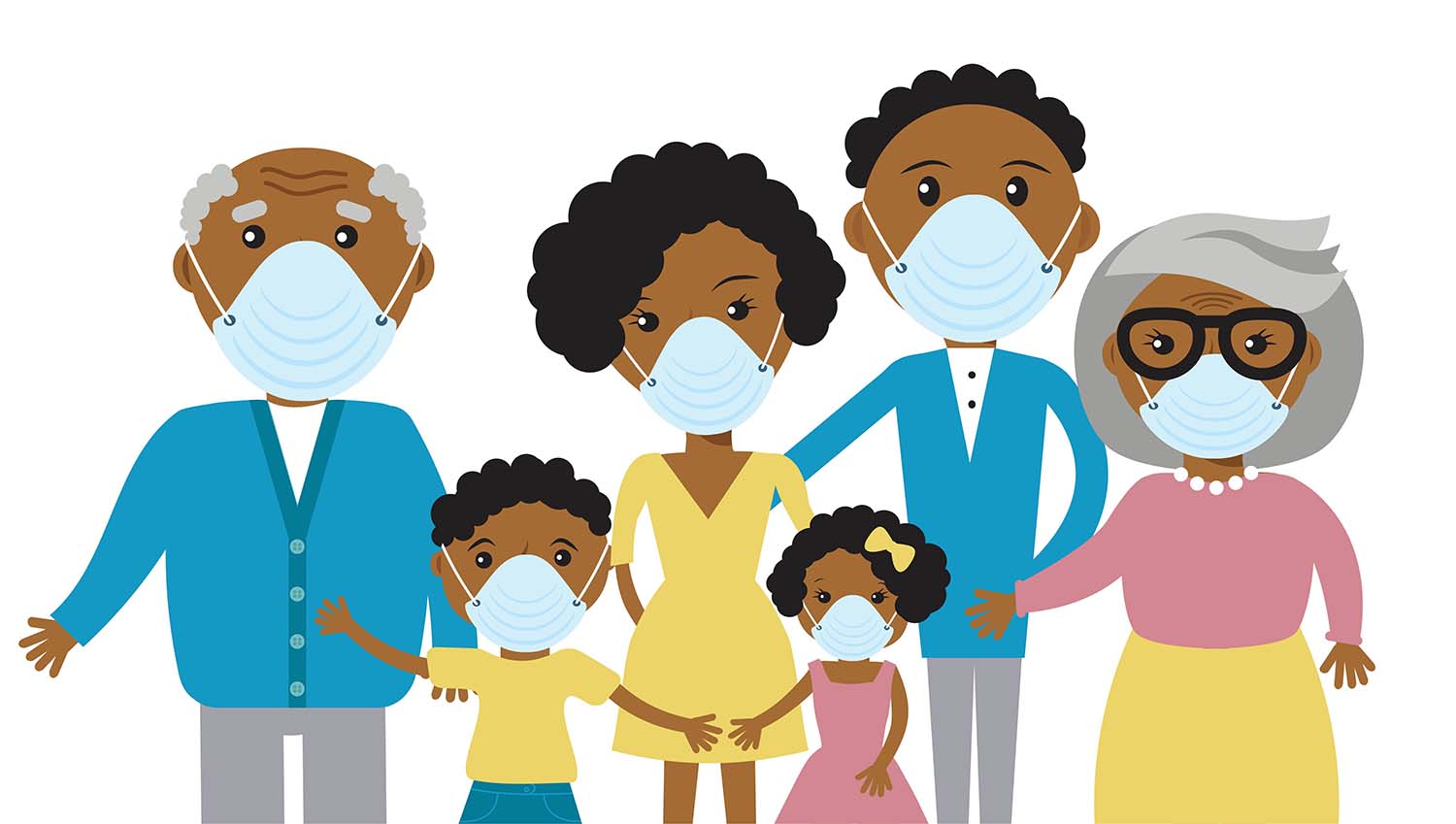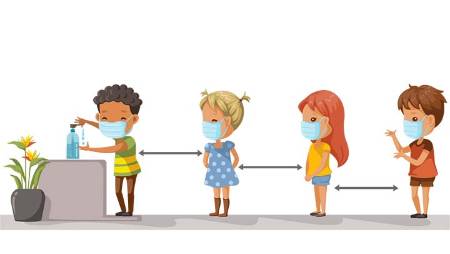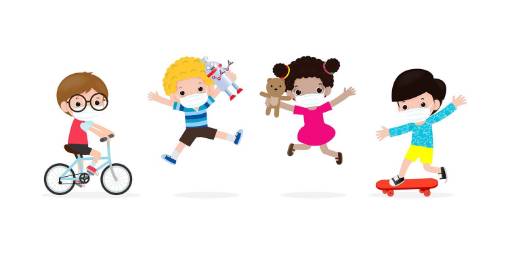July 2020
How can parents and teachers help young children cope with school reentry and COVID-19
July 6, 2020 We all experienced a variety of strange, shocking, and sometimes traumatic changes
in the past few months. After months of shutdown, as the world begins to open up again,
you may be surprised by the reactions of friends, co-workers, and family members.
You may be surprised by your own responses to the world as you reenter. Our daily
routines have been disrupted and it’s hard to know how to adapt. So, if we are struggling
with all of the changes and confusion, imagine what it must be like for young children.
We all experienced a variety of strange, shocking, and sometimes traumatic changes
in the past few months. After months of shutdown, as the world begins to open up again,
you may be surprised by the reactions of friends, co-workers, and family members.
You may be surprised by your own responses to the world as you reenter. Our daily
routines have been disrupted and it’s hard to know how to adapt. So, if we are struggling
with all of the changes and confusion, imagine what it must be like for young children.
So, if we are struggling with all of the changes and confusion, imagine what it must be like for young children.
They are now living in a world full of masks and curbs, stickers on the floor, and hand sanitizer at the door. There are new musts and new nevers. In this world, to children (and young children may be considered birth to age 5) these changes can be alarming and challenging. Teachers, parents, doctors, and counselors are all concerned about children’s experiences during the recent pandemic and the impact this experience will have on their development and learning in the future.
As teachers, parents, and caring adults it is critical to prepare children for the new interactions and expectations, but also to ask them about their thoughts and feelings and really listen to what they say.
In order to support positive development and learning, children (and, in truth, people in general) need to feel respected, that they belong to a community, have a sense of purpose, and opportunities to wonder (Baumgartner & Buchanan, 2010). For young children, play is the best way to support children’s social, emotional, and cognitive selves. Through play, children plan for new situations, organize ideas, regulate their emotions, practice new language/procedures, and interactions and cope with stress. Below are some ideas for how parents and teachers prepare children for re-entry and how play can support this important work.
For young children, play is the best way to support children’s social, emotional, and cognitive selves. Through play, children plan for new situations, organize ideas, regulate their emotions, practice new language/procedures, and interactions and cope with stress. Below are some ideas for how parents and teachers prepare children for re-entry and how play can support this important work.
1. Listen to your child’s concerns and observe their behavior
The best interactions with others begin with listening. When we listen to someone, we are showing them respect. Caring adults should set aside time to talk and listen to children. For a child that is verbal, this may mean a series of questions such as:
- What did you do today? (What would you like to do today?) What was your favorite part and why?
- What are you missing right now? What do you wish you could do?
- Sometimes people feel upset when things change. Share an example of something that made you feel sad or angry. Then ask: How about you? Do you feel this way? Tell me about it.
Because young children are still developing their language and communication skills, part of listening will also mean observing their behaviors. It will be important to remember that behavior is also communication. Children can express sadness, anxiety, fear and anger in many different ways. Acting out, yelling, crying, being mean to siblings, aggressive, can all be signs that your child is working through their emotions and doesn’t know how to express their feelings. Understanding your child’s thinking and wishes can help you to address their concerns as you both prepare for new phases of normalcy.
2. Talk about what to expect
Children belong to families and communities and each comes to the situation with different needs and priorities. You can support children’s sense of belonging by sharing with your child your priorities (we need to stay healthy and be kind to our neighbors) and expectations. Some example statements are listed below (and read these rules for talking to children):
- “In our family, we want to keep everyone safe. This means that you will be asked to wash your hands at many points of the day.”
- “Our family wants to be good neighbors and help others in our community stay healthy. We will wear masks when we go out in public.” (see this child-friendly explanation from our community partners at Knock Knock Children’s museum for why to wear a mask)
- “Our family wants to make sure that (insert here: grandma, grandpa, etc.) is safe. When we visit their home, we will stand back 6 feet and talk. Do you know how to measure 6 feet?”
Some children may have questions about when things will be “normal”. Focusing on what children can do during this time can help. Help their child think of ways to show kindness and participate in the service. The specifics will be determined by your child’s age and interests, but here are some examples:
- Challenge your child to show kindness to others- even though possibly masked. Can you smile at 10 people today? How can you show kindness with just your eyes?
- Encourage children to write notes/drawings to encourage others.
- Think of ways to be a good neighbor- such as painting kindness rocks and delivering them on a walk around the neighborhood, writing and drawing uplifting messages in chalk on the driveway, ...


3. Play with your kids and support their sense of wonder
Supporting children’s sense of wonder and awe at the world around them through play can be an effective way of helping them cope. Children work out their concerns, stresses, emerging ideas, and learning through their play. It is also important to allow children to ask questions and consider new possibilities. When you engage in play with your child, consider voicing this wonderment as you and your child engage in play. Here are some ideas.
| Play Activity | Supportive Language | Resources |
|---|---|---|
| Puppets: use for role play, practicing new interactions, creating new fantasy stories |
|
|
| Music |
|
Learn more about music, children and social-emotional wellbeing |
| Sensory tools (anything to feel- including playdough, water, oobleck, slime) |
|
Recipes for |
| Pretend play (consider wearing masks, practicing new techniques and then removing them and playing for fun), restaurant school, worship service, work, going to the store, etc. |
|
Fred Rogers said many years ago, "In times of stress, the best thing we can do for each other is to listen with our ears and our hearts and to be assured that our questions are just as important as our answers." Respecting children and supporting their sense of belonging, purpose, and wonder by entering their world and work at play can go a long way in helping children heal and grow.
Written by: Jennifer J. Baumgartner, PhD
Dr. Jennifer Baumgartner is an associate professor in the School of Education. She teaches in the PK-3 teacher certification program and early childhood education graduate program. Her research centers around two major issues: 1.) how philosophies and/or knowledge are translated into practices in children’s developmental contexts and, 2.) stress among teachers and children in early care settings. Her work is published in several journals, including Journal of Health Psychology, Early Child Development and Care, Journal of Early Childhood Teacher Education and Young Children. She has experience directing early child development laboratory schools and teaches critical perspectives in early childhood education, child development and stress in education courses.